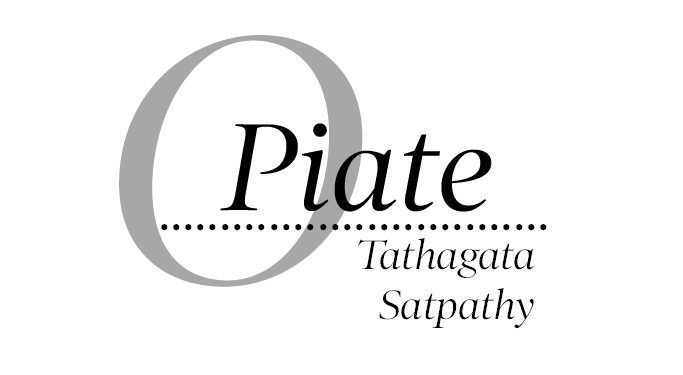India and China are progressing. India at snail’s pace and China in gazelle mode. Since the turn of the Century, China’s growth story has been astounding, while India’s is dismal in most respects. The more China gains economic clout, the more its capacity to take on India, the neighbourhood and the world, in military terms also. This makes it all the more important for India to catch up faster with China in both economic and military terms, rather than applying its mind on a fight with Pakistan, a small fry in the neighbourhood. This is not to under-estimate Pakistan’s mischief potential.
India’s growth story will have to be more impressive. India announced last month that it destroyed one of its own satellites in low orbit with the help of a newly developed military missile, thereby becoming a so-called Space power on par with the US, Russia and China. For China, this was old story. It had successfully conducted a similar test 12 years ago.
China is today the world’s largest economy, at $23 trillion – with EU and the US at the second and third places. China is also the world’s largest exporter. India’s economy has expanded to $2.9 trillion. China is India’s largest trading partner, much more of this being finished products flooding Indian markets from China, and bulk items like cotton, gems, etc or raw materials like iron ore going from India to China. Bilateral trade between the two was of $90 billion in the last fiscal, with trade deficit widening to $62 billion in China’s favour.
Some claim that India and China were leading world economic powers since the first century AD. The Europe-centric Industrial Revolution led to fast-paced economic growth in Europe, followed by the US. India was the ninth largest world economy in 1980 while China’s economy took the 10th position. Deng Xiaoping’s mix of capitalist principles with Communist pursuits, leading to strengthening of a market-based economy since the 1980s, eventually took China forward at a much faster pace. Its impact was felt towards the end of the 20th Century.
India took lessons from China and started its liberalization in the early 1990s. Since then, Indian economy maintained a 7 plus GDP growth rate. From 2014, India’s GDP growth rate has generally been higher than that of China, the only exception being in 2017. This was time when China felt its economy had overheated, and then effected a deliberate slowdown. India replaced France as the world’s sixth largest economy in 2018. IMF feels India would continue to perform better than China, in terms of economy, for the next five years. Percentages notwithstanding, the intrinsic worth of India’s economy is nothing compared to what China achieved.
India’s higher GDP growth rate has not helped it match China’s per capita income rates. China’s PCA was 1.8 times that of India in 1995. By 2014, China’s was 3.4 times that of India. That scenario prevails. This meant, the common man benefited much less from India’s growth than the Chinese in terms of its GDP growth. Huge exports of manufactured items helped China’s GDP growth. This GDP growth helped the average Chinese citizen. Indian exports are touching a plateau in recent years.
India has three times more schools than China, but China took a lead over India since the start of this century in the field of higher education, number of enrolments and sweep of world class educational institutions as also in research. In a global rating of 500 top universities, recently, 22 Chinese institutions find a place while India’s numbered just nine. China revamped its higher education sector in the 1990s through its five year plans while India is failing to make positive changes.
China thinks big in every field of life. China and India were neck and neck when it came to agricultural production in the 1990s. Now, China has 69 million hectares of irrigated area, against India’s 67 million hectares. It adopted advanced water saving and other agricultural technologies to enhance yield. In industrial growth and exports, India’s share stood at around 2 per cent of world exports, while China’s at 12 per cent. China has the world’s largest energy growth market, and India is hoping to catch up with it in another 10 years. China’s Information Technology (IT) revenue is 20 times that of India.
In military terms, India has 120 nuclear warheads against China’s reported 260. China’s military budget is of $160 billion against India’s $52 billion. India spends 1.9 per cent of the GDP on defence, and much of this goes by way of salaries to personnel, while China reduced its manpower, raised its technical superiority and spends 2.5 per cent of its GDP on defence. China has 2.3 million military personnel against India’s 1.2 million. India’s fighter aircraft strength is of over 2,000 while China has about 3,000.
India and China were equals around the turn of the 21st Century. India’s fall in terms of growth deficit vis-a-vis China that happened in the past two decades is spectacular. India’s political thinking has damaged the economy. The prime reason is that there is no consistent thought behind any action taken in this country. While China has, probably because of its communist background, been able to sort out its policy issues over a short period of time, India has always refrained from formulating positive policies that would take the country forward on a well laid path. Without a proper and long-lasting policy roadmap, Indian leadership has been always dependent on programmes. Until Indian society at large, not just politicians, decide to change the programme/scheme mindset, this nation is destined to suffer without tangible ground-level development. Indians would have to continue living on doles offered by a debt-ridden government unless this mindset changes.






































